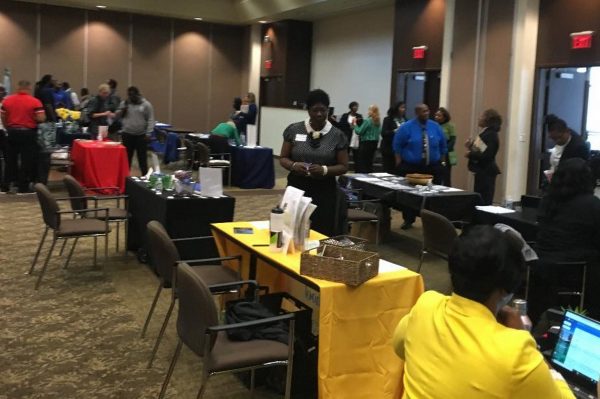More And More, Colleges Open Their Doors To Transfer Students

College students are increasingly starting their college careers at two-year schools as a more affordable pathway to a bachelor’s degree.
Pixabay Images
Colleges and universities are starting to accept — and recruit — more transfer students. About 30,000 students transfer into Georgia’s university system each year, according to the National Institute for the Study of Transfer Students. Nationally, roughly 1 in 3 college students is a transfer, and an increasing number of them are coming from two-year schools.
Giving Credit Where It’s Due
The Technical College System of Georgia has a reputation of preparing students for the workforce. The system offers programs in high-demand fields like computer programming and welding, where students can find jobs immediately.
Students who qualify for the HOPE Grant can get full tuition paid in 17 career fields.
However, Georgia’s technical college system has also been working with the university system to make transferring easier. The two systems have an agreement that allows 27 specific credits to transfer from technical schools to the state’s public colleges.

A recent study from the U.S. Government Accountability Office shows, on average, transfer students lose 43 percent of their course credits.
“That credit loss then leads to extended time to degree. It looks at potentially increasing the cost for education both to the students and, honestly, to the taxpayers,” says Janet Marling, executive director of the National Institute for the Study of Transfer Students located at the University of North Georgia in Dahlonega.
Dr. Cheree Williams is the vice president of academic affairs at Georgia Piedmont Technical College. She says even though several TCSG credits transfer to the University System of Georgia, school advisers help students map out their classes to make sure they’re on the right track.
“It’s kind of identifying that if I say I’m going to go to Georgia State, what does Georgia State require?” Williams says. “If I say I want to go to UNG, what does UNG require? Although they are part of the university system, they may have different requirements in regards to competitive admission.”
Georgia Piedmont has transfer agreements with some four-year colleges (outside of the state’s university system) to ensure students’ credits are accepted in a particular course of study.
A Technical Advantage
Chantamekia Hardy is a student at Georgia Piedmont. She’s transferring into the nursing program at South College in the fall. Hardy says she feels prepared for the transition, in part, because she received a lot of personal guidance.
“You’re able to come in the office and get assistance, where if you go to a different school, you have to schedule an appointment and appointments are booked,” Hardy says. “But here at Georgia Piedmont, you’re able to just go in and speak to anyone.”

Dr. Dale Burgess is the dean for Georgia Piedmont’s school of arts and sciences. He says starting out in a smaller academic environment can help prepare students for a four-year program.
“You can learn how to be a student,” Burgess says. “So when you make the transfer to another school, you’re ready. You’re ready to go.”
Gabriele Williams is enrolled at Georgia Piedmont for the second time. Her first time was in high school when she took advantage of the state’s dual enrollment program, where high school students can take college courses. From there, she went to Georgia Gwinnett College.
After some time off, she returned to Georgia Piedmont to finish her core classes. She plans to transfer to Georgia State University next year. She says she’s ready for a bigger campus after learning how to navigate a smaller one.
“[My biggest concerns are] just making sure I know where my counselor’s office [is],” she says. “People who I know I need help from time to time, just knowing where they are.”
Williams says she feels more prepared for GSU now than she would have if she started there as a freshman.
“You have [a guidance] office at high school, but when you go to college everybody’s scattered here and there [in] different departments. So … really that does help you as far as your performance … knowing where your tools are.”
‘A Viable Starting Place’
For Daniel Long, those tools have included finding out he qualifies for some financial aid from Veterans Affairs. His dad served in the military, which entitles him to some financial benefits.
“Before I came here, I didn’t know that the veterans services could provide so much support to me while I’m taking classes … with financial aid and things,” he says. “But now I know that they can provide a lot of support.”
Accessing financial aid can be a challenge for transfer students, Janet Marling says.
“The institutions are simply not in the practice of identifying funds specifically for transfer students,” she says. “So, when they’re not thinking about that population, or are holding scholarship dollars aside, then typically those monies do go — first and foremost — to recruiting students directly from high school.”
Two-year colleges often provide more affordable pathways to bachelor’s degrees. For example, tuition rates for in-state students at Georgia Piedmont are $89 per credit hour. At the University of West Georgia, in-state students paid $177.67 per credit hour in FY19. Students who transfer from two-year schools to four-year colleges can save on tuition and fees. That means they don’t leave with crippling debt, Cheree Williams says.
“That is a huge advantage that the technical system gives — that we can decrease that debt,” she says. “It’s a lot cheaper.”
In addition, colleges and universities are increasingly admitting students at two-year schools to balance enrollment and add diversity to their student populations, Marling says.
“What you’re seeing is that the community colleges are being valued as a viable starting place for a student’s education,” she says.
Daniel Long says it was the right move for him.
He’s studied drafting since high school and plans to transfer from Georgia Piedmont to either Georgia Tech or Kennesaw State University to earn a degree in mechanical drafting or industrial design.
“I feel like I’ve got the experience and the knowledge necessary to now move to a bigger school and continue my education because I’ve had such support and such a great environment to learn in,” he says.








